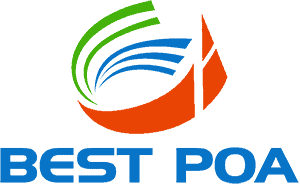More Information about our Tuition Classes
Are you constantly getting mediocre grades that you are on the verge of giving up for O Level? Don’t give up hope, because Best POA is here to help! Our O Level POA Tuition is specially catered to students, like you, who are struggling with POA. We believe that every student has the potential to score distinction with proper guidance and sheer determination.
Topics Covered
Topics covered for O Level POA Tuition are based on the POA textbook
- Introduction to business (Types of business ownership)
- Stakeholders and their decision needs
- Roles of accounting and accountants
- Accounting theories
- Types of business transactions (Cash vs credit transactions)
- Accounting cycle
- Types of source document
- Accounting information system
- 5 Elements of financial statements (Assets, liabilities, equity, income and expense)
- Accounting equations (Basic and expanded equations)
- Understanding double-entry recording system
- Journal entries (Double-entries for recording of business transactions)
- Ledger accounts (Opening, recording and closing of ledger accounts)
- Discounts (Trade vs cash discounts)
- Interpreting ledger accounts
- Trial balance
- Financial statements (Statements of financial performance and position)
- Income (Definition and accounting theories)
- Accounting for revenue
- Accounting for other income
- Presentation of Income
- Interpreting revenue and other income
- Expenses (Definition and accounting theories)
- Accounting for expenses
- Presentation of expenses
- Interpreting other expenses
- Cash (Cash, cheques, dishonoured cheques, bank statement)
- Interpreting cash at bank
- Purposes of internal controls
- Bank reconciliation (Purposes and presentation)
- Inventories (Definition and accounting theories)
- Decision: Which inventory to buy
- Accounting of inventories (Cost of purchases, cost of sales, FIFO)
- Accounting for impairment loss on inventory
- Interpreting inventory
- Trade receivables (Definition and accounting theories)
- Decision: Credit worthiness of customers
- Accounting for trade receivables
- Accounting for impairment loss on trade receivables
- Interpreting allowance for impairment of trade receivables
- Non-current assets (Definition and accounting theories)
- Accounting for non-current assets (Capital vs revenue expenditures)
- Accounting for deprecation (Definition, methods, calculation and recording)
- Interpreting non-current assets
- Accounting for sale of non-current asset
- Interpreting sale of non-current asset
- Trade payables (Definition)
- Decision: Which supplier to buy from
- Accounting for trade payables
- Interpreting trade payables
- Borrowings (Definition and accounting theories)
- Accounting for loan
- Presentation of long-term borrowings
- Accounting for interest expense
- Presentation of interest expense
- Interpreting loan and interest expense
- Equities (Types of Equities, definition and accounting theories)
- Owner’s equity (Sole-proprietorship, capital vs drawings accounts)
- Accounting for owner’s equity
- Interpreting drawings and capital
- Shareholders’ equity (Private limited company)
- Accounting for shareholders’ equity
- Interpreting share capital, dividends and retained earnings
- Errors not revealed by trial balance (Definition and types of errors)
- What are the sources of the transactions recorded in the control accounts?
- Effects of adjustments
- Preparation of statements of adjusted trial balance, profit and financial position
- Financial statement analysis (Calculation and analysis of financial ratios)
- Profitability
- Liquidity
- Efficiency in inventory management
- Efficiency in trade receivables management
Location
Blk 56 Geylang Bahru
5 mins walk from Geylang Bahru MRT Station (DT24)
Bookings on priority basis, please call 9050 9010 for class availability.
Average Exam Results of Our POA Students
GCE O Level
Regular Class
42.6% Students scored A1
32.7% Students scored A2
8.9% Students scored B3
Crash Class
21.6% Students scored A1
30.2% Students scored A2
19.9% Students scored B3











